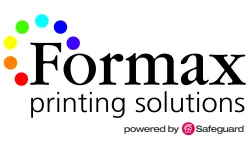Printing Guidelines: Product Instruction Manuals & Instruction Sheets

The majority of consumer products come with some form of printed Instruction books or Instruction sheets
The majority of consumer products come with printed instructions. In most cases, the instructions provide logical, step-by-step procedures for assembling, installing and/or operating the product.
Instructions are sometimes printed directly on the exterior of the product's packaging, but most of the time the instructions are printed as a separate sheet or booklet. My experience over the years has shown that printed instructions generally fall into one of three categories:
1) Flat Instruction Sheets
Products that are relatively simple and straight-forward generally have simple and straight-forward instructions. In these cases, a single sheet of paper may convey all the information the consumer needs to know.
Also, the physical size of the instruction sheet is normally determined by the amount of information that needs to be conveyed. For example, if the only instructions needed are how to install batteries then a small slip of paper may do the trick.
2) Folded Instruction Sheets
Some products have instructions that require more information than a single sheet can provide, yet they do not quite have enough information to warrant a bound manual. In these cases, it is common to print the instructions on a large sheet of paper and then fold it down into separate panels or pages.
Unlike a bound instruction manual, a single sheet can be folded down as far as necessary to fit into the product's packaging. Furthermore, if the physical size of the instructions needs to be extremely small, an operation called miniature folding or pharmaceutical folding can be used. This method often uses a lighter weight of paper and numerous folds to reduce a detailed instruction sheet down to a very small size.
3) Instructions in Book Form
Product instructions in the form of a book or booklet allow a tremendous amount of information to be referenced easily. This is why more complicated products - such as software programs, technical devices and intricate assemblies - often require the need for a bound instruction manual.
Two common binding methods for printed instruction manuals are saddle stitch binding and perfect binding. Saddle stitch binding uses staples to hold folded sheets together to form a booklet. Perfect binding uses a strong yet flexible glue to hold the cover and pages together.
Ways to Save Money on Product Instruction Manuals & Instruction Sheets
Whether a product's instructions are printed as a single sheet, a folded sheet or in book form, by the time a consumer sees the instructions he/she has likely already purchased the product. And since the goal of an instruction manual or instruction sheet is purely informational - not promotional - printed instructions are often produced by the most economical "no-frills" method.
For example, color is usually kept to a minimum when printing instructions. There are exceptions, but in most cases instruction manuals and instruction sheets are produced with black ink on white paper to keep printing costs low. Another way to reduce printing costs is to use the lightest grade of paper that will properly convey the information. Printing on standard paper sizes also helps keep the costs down.
In addition, it helps to match the size of your printing job to the proper production equipment. For example, if you only need a few instruction manuals they can likely be produced more economically on a digital printing press. As the volume of printed manuals increases, it becomes more economical to produce them on a sheet-fed offset printing press. And once the volume becomes very high, a web offset press will provide the lowest unit cost.
Looking for instructions to be printed? Look no further than Formax Printing. We specialize in printing instruction sheets and manuals in any size or quantity you require. With a range of binding methods and folding styles available, we can customize your instructions to suit your needs. Our state-of-the-art production equipment, including digital presses, sheet-fed offset presses, and web offset presses, allows us to efficiently produce instructions in any quantity, ensuring a cost-effective solution for you. If you would like more information give us a call at 866-367-6221 or submit our quote request form.
Take care! Rick
Tags: Instruction Booklets, Instruction Books, Instruction Manual Printing, Instruction Manuals, Instruction Printing, Instruction Sheets, Manual Printing, Manufacturing Instructions, Midwest Book Printing, Midwest Printing, Miniature Folding, Missouri Printing, Pharmaceutical Folding, Printed Instructions, Printed Manuals, Product Instruction Manuals, Product Instruction Sheets
